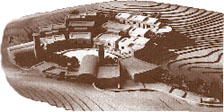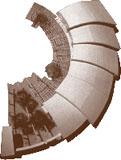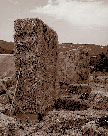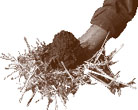
|
Place as form-giver. At the Ojai Foundation School, soil from the site is used for building walls. |
|
|
1. SOLUTIONS GROW FROM PLACE |
|
Light as form-giver. We approach each design problem from the inside out. At Real Goods Solar Living Center, curved roof forms and clerestories distribute natural light throughout the building. |
|
|
2. MAKE NATURE VISIBLE |
|
Materials that join economy and technology. The waste stream generates new opportunities to save costs while saving the environment. Here we combine straw bale and earth building at the Real Goods Solar Living Center (right) and San Domenico School (below). |
|
|
3. DESIGN WITH NATURE |
|
|
|
|
4. ECOLOGICAL ACCOUNTING INFORMS DESIGN |
|
Sustainable San Domenico, a K-12 ecological design education project, uses site as a textbook in developing a comprehensive curriculum connecting ecology, design and spirit. | 
|
|
5. EVERYONE IS A DESIGNER |






|
About EDI | Design | Education | Publications | Principles | EDEN | Contact EDI
|



